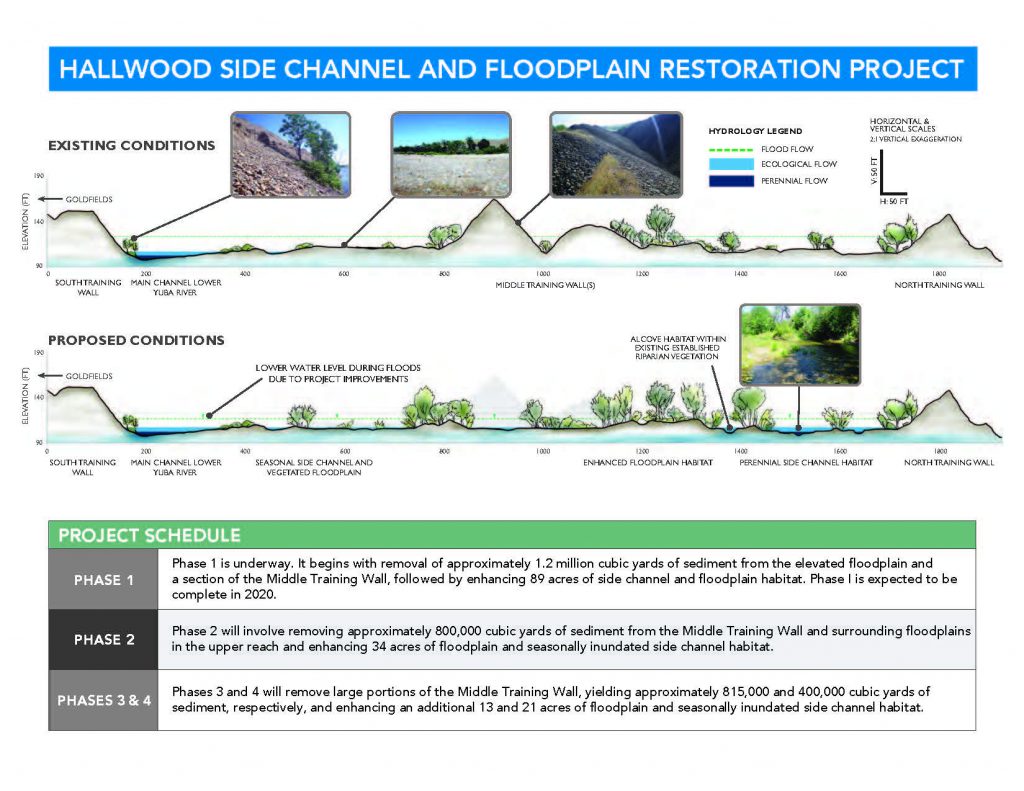
![]()
![]()
Frequently Asked Questions
The floodplain surrounding the more than 3 miles of perennial side channels and 4 miles of seasonal side channels will inundate continuously for several weeks approximately every 2 years with shallow slow water favorable for juvenile salmonids. Groundwater fed perennial side channels will stay connected all year, while seasonal side channels will inundate with typical spring flows to provide off channel rearing habitat for juvenile salmonids.
The Project will improve more than 170 acres of seasonally inundated riparian floodplain habitat for numerous riparian tree species, and the host of aquatic and terrestrial organisms that reside in these habitats. This Project increases connectivity of these habitats for a healthier, more productive river system; a resource benefit to the public for purposes such as aesthetics and recreation.
Pre-project monitoring began in 2014, with the following activities performed in 2014-2016: snorkel surveys, marcoinvertebrates (aquatic bugs), and water temperature. Riparian vegetation composition and recruitment, and dissolved oxygen and turbidity grab measurements were performed in 2016. Pre-project monitoring studies designed to compare fish health in off-channel habitat to the main channel using juvenile outmigration and predation experiments were performed in Spring 2016. As part of implementation, physical and biological variables such as these will be monitored into the future to assess the Project’s effectiveness and learn lessons for future projects like this in the Central Valley.
This is the first project of its kind on the Yuba River, but similar actions have been taken on other rivers in California. For example, on the Merced River, floodplain grading to create spawning habitat has led to high levels of spawning and floodplain utilization by juvenile salmonids. Additional projects on the Trinity, Stanislaus, and American Rivers have also improved main channel, off-channel and floodplain habitats for salmonids.
The public can sign up to subscribe to the Hallwood Project mailing list to receive status updates as the Project progresses.